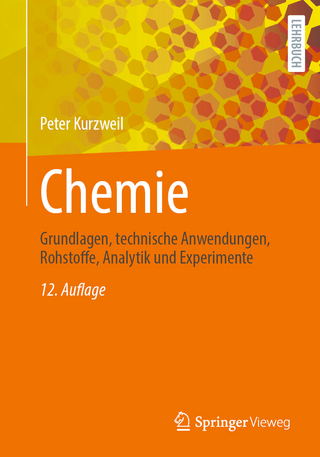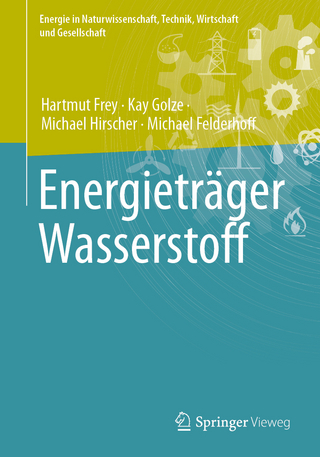
Pinch Analysis for Energy and Carbon Footprint Reduction
Butterworth-Heinemann Ltd (Verlag)
978-0-08-102536-9 (ISBN)
This new edition offers tips and techniques for practical applications, supported by several detailed case studies. Examples stem from a wide range of industries, including buildings and other non-process situations. This reference is a must-have guide for chemical process engineers, food and biochemical engineers, plant engineers, and professionals concerned with energy optimization, including building designers.
Ian Kemp has over 30 years of experience in pinch analysis and process energy reduction, including consultancy, R&D, and technical writing. He was a principal technologist at AEA Technology, Harwell, and a scientific leader at GSK. He received the IChemE Junior Moulton Medal in 1989 for his paper on Batch Process Integration and the IChemE Brennan Medal in 2007 for the second edition of this book. His specialties include solids processing, particularly of pharmaceuticals, and drying processes, including spray drying, fluid bed drying and granulation, and dryer selection and troubleshooting, as well as energy reduction, sustainability, and pinch analysis. Dr. Jeng Shiun Lim is a researcher in Process Systems Engineering Center (PROSPECT) and Research Institute of Sustainable Environment (RISE). His specialties include energy management and energy planning for greenhouse gas emissions reduction and resource conservation and planning via systematic techniques (pinch analysis, mathematical modelling, and optimization). He has published 45 ISI and 37 Scopus indexed articles to date. He has been extensively involved in research projects and industrial-based projects to assist those companies identifying energy saving opportunities worth millions of dollars through the use of process integration and process systems engineering approach.
1. Introduction
1.1 What is pinch analysis?
1.2 Historical development and industrial experience
1.3 Why does pinch analysis work?
1.4 The concept of process synthesis
1.5 Hierarchy of energy reduction
1.6 The role of thermodynamics in process design
1.7 Learning and applying the techniques
1.8 A note on terminology
2. Carbon footprint and primary energy
2.1 Introduction
2.2 Definition of carbon footprint
2.3 Primary energy
2.4 Carbon dioxide emissions and carbon footprint
2.5 Components of carbon footprint
2.6 Carbon pinch and emissions targeting
2.7 Energy costs
2.8 Conclusions
3. Key concepts of pinch analysis
3.1 Heat recovery and heat exchange
3.2 The pinch and its significance
3.3 Heat exchanger network design
3.4 Choosing ΔTmin: supertargeting
3.5 Methodology of pinch analysis
3.6 Worked exercise
4. Data extraction and energy targeting
4.1 Data extraction
4.2 Case study - organics distillation plant
4.3 Energy targeting
4.4 Multiple utilities
4.5 More advanced energy targeting
4.6 Targeting heat exchange units, area and shells
4.7 Supertargeting; cost targeting for optimal ΔTmin
4.8 Targeting for organics distillation plant case study
4.9 Exercises
Appendix – Algorithms for Problem Table and composite curves
5. Heat exchanger network design
5.1 Introduction
5.2 Heat exchange equipment
5.3 Stream splitting and cyclic matching
5.4 Network relaxation
5.5 More complex designs
5.6 Multiple pinches and near-pinches
5.7 Retrofit design
5.8 Operability; multiple base case design
5.9 Network design for organics distillation case study
5.10 Conclusions
5.11 Exercises
6. Utilities, heat and power systems
6.1 Concepts
6.2 Combined heat and power systems
6.3 Heat pumps and refrigeration systems
6.4 Total site analysis
6.5 Worked example – organics distillation unit
6.6 Worked case study and example for total site problem table algorithm
6.7 Case studies and examples
6.8 Exercises
7. Process change and evolution
7.1 Concepts
7.2 General principles
7.3 Reactor systems
7.4 Distillation columns
7.5 Evaporator systems
7.6 Flash systems
7.7 Solids drying
7.8 Other separation methods
7.9 Application to the organics distillation process case study
7.10 Summary and conclusions
7.11 Exercises
8. Batch and time-dependent processes
8.1 Introduction
8.2 Concepts
8.3 Types of streams in batch processes
8.4 Time intervals
8.5 Calculating energy targets
8.6 Heat exchanger network design
8.7 Rescheduling
8.8 Debottlenecking
8.9 Other time-dependent applications
8.10 Conclusions
9. Water, hydrogen, and carbon pinch
9.1 Introduction
9.2 Concepts
9.3 Key steps in mass pinch analysis
9.4 Application and case study for water pinch analysis (Glove Industry)
9.5 Application and case study for hydrogen pinch analysis
9.6 Conclusions for water and hydrogen pinch analysis
9.7 Carbon pinch
10. Applying the technology in practice
10.1 Introduction
10.2 How to do a pinch study
10.3 Heat and mass balance
10.4 Stream data extraction
10.5 Targeting and network design
10.6 Project evaluation and costing
10.7 Targeting software
10.8 Exercises
11. Industrial experience
11.1 Overview
11.2 Oil refining
11.3 Bulk chemicals – continuous
11.4 Speciality and batch chemicals and pharmaceuticals
11.5 Pulp and paper
11.6 Food and beverage
11.7 Consumer products and textiles
11.8 Minerals and metals
11.9 Heat and power utilities
11.10 Buildings
11.11 Waste processing and sewage
12. Case studies
12.1 Introduction
12.2 Crude preheat train
12.3 Aromatics plant
12.4 Evaporator/dryer plant
12.5 Organic chemicals manufacturing site
12.6 Food processing plant
12.7 Hospital site
12.8 Conclusions
12.9 Exercises
13. Conclusions
Notation
Further reading
Appendix 1. Using the spreadsheet software
Appendix 2. Answers to selected exercises
Index
| Erscheinungsdatum | 14.08.2020 |
|---|---|
| Verlagsort | Oxford |
| Sprache | englisch |
| Maße | 191 x 235 mm |
| Gewicht | 1120 g |
| Themenwelt | Naturwissenschaften ► Chemie ► Technische Chemie |
| Technik | |
| ISBN-10 | 0-08-102536-X / 008102536X |
| ISBN-13 | 978-0-08-102536-9 / 9780081025369 |
| Zustand | Neuware |
| Informationen gemäß Produktsicherheitsverordnung (GPSR) | |
| Haben Sie eine Frage zum Produkt? |
aus dem Bereich


